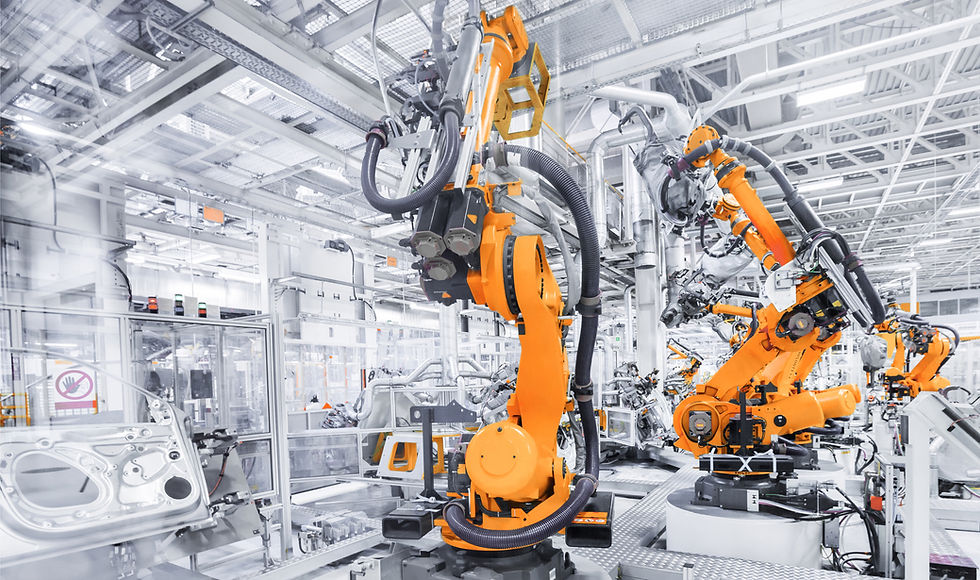What’s Up with the “Skills Gap” in Manufacturing
- Ronnie Garcia

- May 5, 2023
- 3 min read

The manufacturing and distribution sector have long been a driving force in the global economy, and their importance is only growing as advances and new markets emerge. The global supply chain has gone through major transformations over the years allowing consumer products to land on doorsteps within a couple days (sometimes hours) – far from the weeks it used to take in the pre-internet days. However, one major challenge facing the industry is the growing "skills gap," or the disparity between the skills that workers possess and the skills that employers require. Despite the huge access to educational information society has today, the average worker in this sector still lacks the skills needed to keep up with demand, according to many employers.
According to a Deloitte 2021 report, more than 2.1 million manufacturing jobs will go unfilled over the next decade due to a skills gap.
So why are employers struggling to find workers with the necessary skills?
One of the main reasons for the skills gap in the manufacturing and distribution sector is the rapid pace of technological change. Employers are looking for workers with specialized skills in areas such as robotics, high-tech production engineering, and data analytics as automation and other advanced technologies continue to transform the industry. Many workers, however, lack these skills, and there are frequently inadequate opportunities for them to acquire such skills.
Another contributing factor to the skills gap is the skilled folks leaving the industry for retirement. As more and more experienced workers retire, there are not enough younger workers with the necessary skills to replace them. This is exacerbated by the fact that many young people don’t see manufacturing and distribution as an attractive career path. Couple that with the lack of emphasis on vocational education and training in schools today and you have a very large Skills Gap (not to mention what pandemic did to people changing industries)
How do can employers address it?
One method for employers in manufacturing and distribution is to upskill their existing workforce. This involves investing in training programs and providing opportunities for workers to learn new skills.
You might think that getting a recruitment/staffing company is an obvious answer. I mean we're a recruitment company and I can tell you that's not a complete answer for the industry. Don't get me wrong, recruitment and staffing firms like Mount Recruiting & Workforce Solutions have been leveraged by employers since the 1940s to help fill a variety of roles from entry level, technical, and senior levels that a client company cannot seem to fill. A matter of fact, there’s very compelling reasons to incorporate recruitment firms in a company’s business model. If an employer is partnered with a solid firm that has industry labor insights, talented recruiters, etc, the employer could have a huge advantage over some competitors. (Check out How to Leverage a Recruitment or Staffing Firm). However, simply “using a staffing company” doesn’t address the shrinking number of workers with the necessary skills.
So, in addition to upskilling the current workforce, employers must make sure that as new talent enters the industry companies are presenting a viable career path and gainful opportunities. Especially considering that of the manufacturers surveyed in the Deloitte report 83% said attracting and retaining a quality workforce was a top focus. Many employers are also partnering with educational institutions to develop training programs that are specifically tailored to the needs of the industry.
If you haven’t notice over many decades, the values of different generations change over time so it’s important for company leaders to consider that in your offerings and benefit packages to attract and retain these workers. Of course, someone will argue that automation and artificial intelligence will ultimately take over anyway. However, although some employers are turning to automation and other advanced technologies to help fill the skills gap, it doesn’t come close to solving the skills gap today.
Overall, the skills gap in manufacturing and supply chain is a significant challenge that is likely to persist in the coming years. With the right investments, collaborative initiatives on training, and a focus on cultivating/attracting new talent to the industry, employers can begin to close the gap and ensure that they have the skilled workforce they need to thrive in a rapidly changing global economy.

Comments